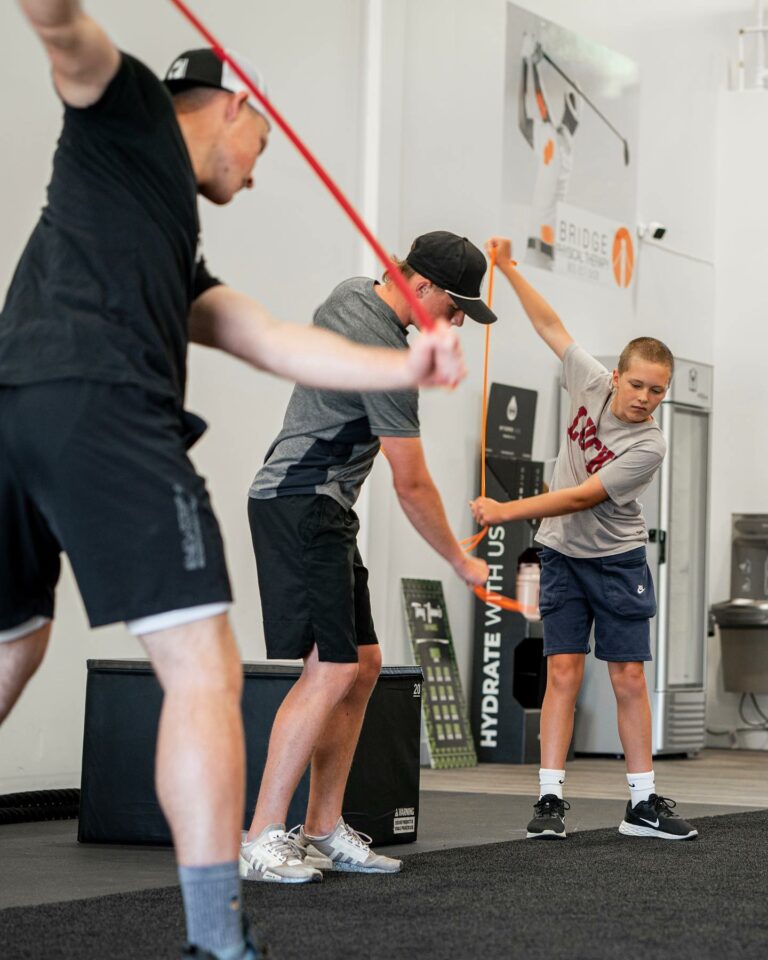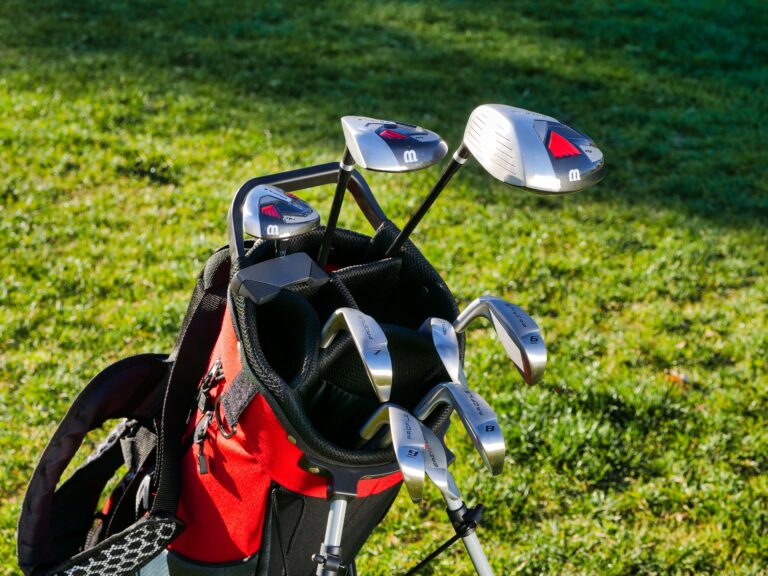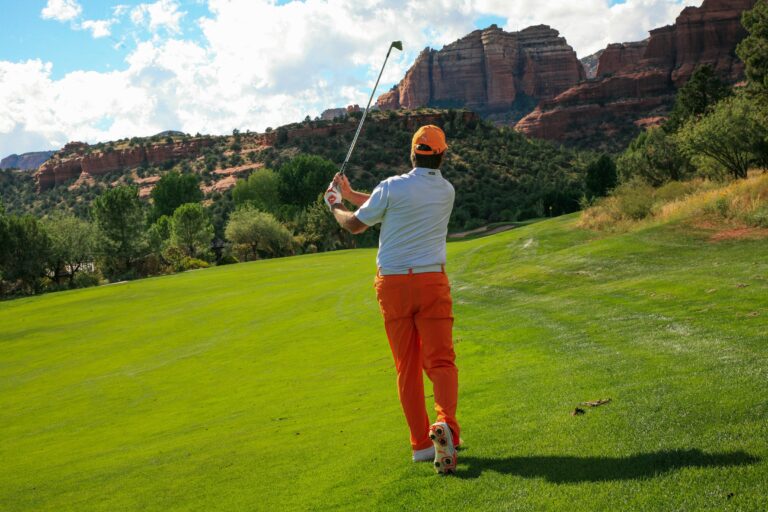Golfer’s Elbow, known medically as medial epicondylitis, is a common overuse injury that affects not only golfers but also athletes and individuals engaged in repetitive gripping and wrist flexion activities. Here we’ll cover what causes Golfer’s Elbow, its impact on the body, and how it differs from its counterpart, Tennis Elbow. Moreover, we’ll explore the various treatments available for managing this condition.
For golf training and conditioning, join us at any of our following locations:
- Kaysville Utah golf courses
- Morgan Utah golf course
- St. George Utah golf
- West Haven golf course
- Uintah golf
- Mulligans golf Ogden UT
- Golf course near Salem UT
- Golf courses in South Jordan
- Golf course in West Jordan
- Payson UT golfing
- Mapleton Utah golf course
What Causes Golfer’s Elbow?
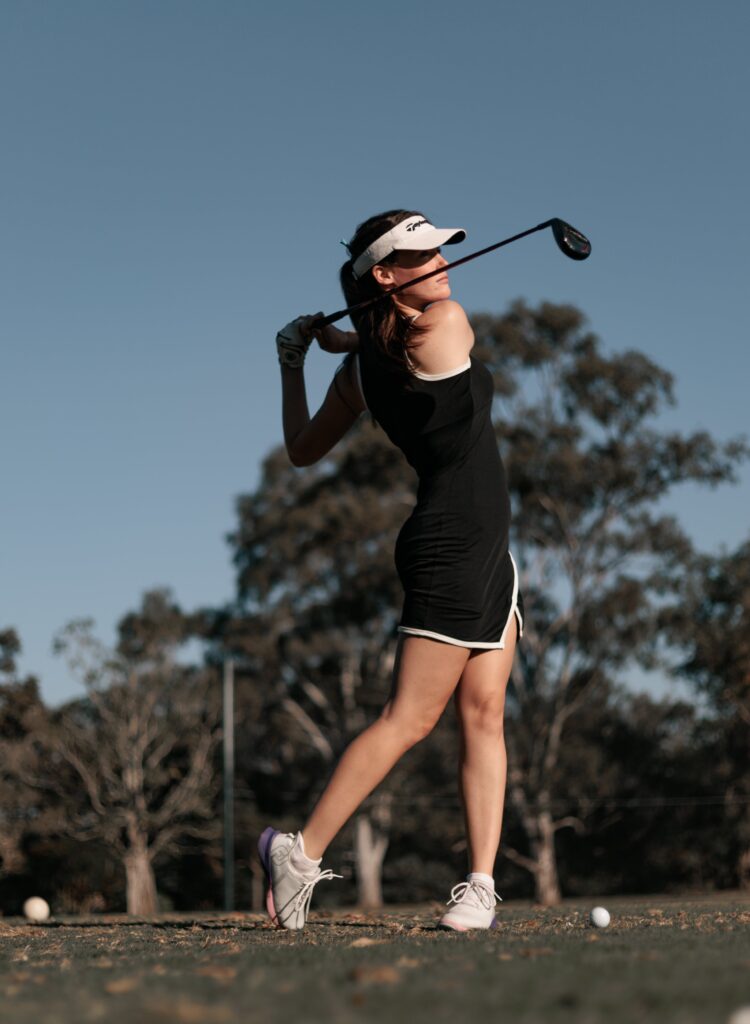
Golfer’s Elbow is primarily caused by the repetitive stress placed on the tendons and muscles on the inner side of the elbow. The primary culprits include:
- Repetitive Gripping: Activities like golfing, racket sports, weightlifting, and even typing can strain these tendons due to continuous gripping and wrist flexion movements.
- Forceful Wrist and Finger Flexion: Engaging in actions that require forceful flexion of the wrist and fingers can contribute to this condition.
- Overuse: Excessive, repetitive use of these tendons without adequate rest can lead to Golfer’s Elbow.
Risk factors for developing Golfer’s Elbow include age (common in those aged 40 and older), participation in specific sports, and using equipment that doesn’t fit or is improperly adjusted.
How Does Golfer’s Elbow Affect My Body?
Golfer’s Elbow can manifest through several symptoms, primarily centered around the forearm and wrist. Common effects include:
- Pain: Discomfort or pain on the inner side of the elbow, which may radiate down the forearm.
- Weakness: Weakened grip strength, making everyday activities challenging.
- Stiffness: A feeling of stiffness in the elbow and wrist, particularly in the morning or after periods of inactivity.
- Numbness and Tingling: Some individuals may experience numbness and tingling sensations in the fingers.
The condition can interfere with various aspects of daily life, affecting not only your golf game but also work and recreational sports.
What’s the Difference Between Tennis Elbow and Golfer’s Elbow?
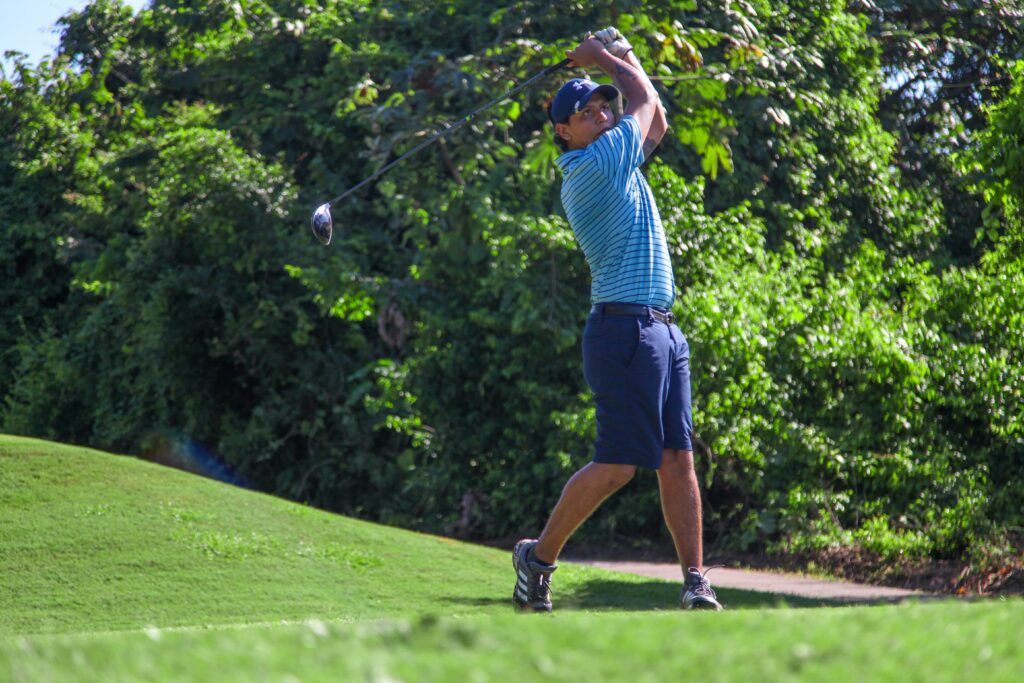
It’s important to differentiate between Golfer’s Elbow and Tennis Elbow as they share similarities but affect different tendons and arm movements:
- Golfer’s Elbow: Affects the inner tendons and muscles of the forearm, caused by gripping and wrist flexion activities (e.g., golf swings).
- Tennis Elbow: Affects the outer tendons and muscles of the forearm, typically caused by repetitive wrist extension (e.g., tennis backhand swings).
Both conditions are forms of tendonitis, but the affected areas and triggering arm movements are distinct.
How to Treat Golfer’s Elbow
Several treatment options are available for managing Golfer’s Elbow, depending on the severity of the condition. Here are the most common approaches:
A. Rest and Modification
Resting the affected arm is crucial to allow natural healing to occur. Modify your activities, including your golf swing, to minimize strain on the affected tendons.
B. Physical Therapy
Physical therapy focuses on strengthening the forearm muscles and improving flexibility. Specific exercises can help rehabilitate Golfer’s Elbow.
C. Anti-Inflammatory Medications
Over-the-counter or prescription anti-inflammatory medications can alleviate elbow pain and reduce inflammation. Always consult a healthcare professional before using these medications.
D. Brace or Strap
Using an elbow brace or strap can provide support and relieve strain on the affected tendons. It’s important to select the right device and wear it properly.
E. Corticosteroid Injections
In severe cases, corticosteroid injections may be recommended to reduce inflammation. These injections should be administered under medical supervision, considering potential risks and benefits.
F. Surgery
Surgery is typically considered a last resort when conservative treatments fail to provide relief. Surgical procedures aim to repair or release the damaged tendons.
Golfer’s Elbow is a common condition that can affect your golf game and daily activities. Understanding its causes, symptoms, and treatment options is essential for managing the condition effectively. If you experience Golfer’s Elbow symptoms, seek medical advice promptly. Early intervention and prevention are key to a successful recovery and a return to the golf course without pain and discomfort.



